Episodes
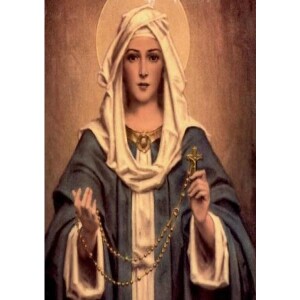
Saturday Jun 22, 2024
Saturday Jun 22, 2024
Stand In The Gap With Us And Saint Thomas More 6/22/2024. Thomas More was born in London on February 7, 1478. His father, Sir John More, was a lawyer and judge who rose to prominence during the reign of Edward IV.
Thomas More was born in London in 1478 and studied to become a lawyer. Recognized for his great intelligence, impartiality, and wisdom, he rose through the ranks of Parliament and earned King Henry VIII's favor until he became Lord Chancellor in 1529.
Thomas was positively influenced from a young age by his mother and siblings. He also attended St. Anthony's School, which was said to be one of the best schools in London at that time. In 1490, he became a household page to John Morton, the Archbishop of Canterbury and Lord Chancellor of England. Archbishop Morton was a Renaissance man and inspired Thomas to pursue his own education.
Thomas More entered Oxford in 1492, where he would learn Latin, Greek and prepare for his future studies. In 1494, he left Oxford to become a lawyer and he trained in London until 1502 when he was finally approved to begin practice.
His belief that no lay ruler has jurisdiction over the Church of Christ cost Thomas More his life.
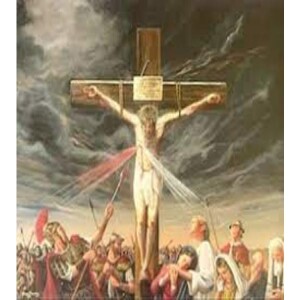
Saturday Jun 22, 2024
Saturday Jun 22, 2024
What does INRI mean? Both the INRI and the skull and crossbones are mentioned in the passion accounts of our Lord. First, INRI is an abbreviation for the Latin Iesus Nazarenus Rex Iudaeorum, meaning “Jesus the Nazorean, King of the Jews.”
In sentencing our Lord to death, Pontius Pilate had this inscription written in Hebrew, Latin and Greek (Jn 19:20) placed on the Cross above the head of our Lord.
Each of the Gospels testifies to this inscription, although with slight variations: St. John’s Gospel, “Jesus the Nazorean, the King of the Jews”; St. Matthew’s Gospel, “This is Jesus, King of the Jews”; St. Mark’s Gospel, “The King of the Jews”; and St. Luke’s Gospel, “This is the King of the Jews.” Since St. John stood with the Blessed Mother at the foot of the Cross, his Gospel is the most accurate, although all of the Gospels agree in substance as to what was written.
Another interesting point arises in artwork depicting the Crucifixion. Sometimes the inscription will be fully spelled-out (not simply INRI), but spelled backward. The artists are mindful that Hebrew is read from right to left, not left to right as in English.
Finally, the use of all three languages — Hebrew, Latin and Greek — served a dual purpose. First, these were the languages that would have been spoken in Jerusalem at the time of the Crucifixion. Secondly, Hebrew was the language of the chosen people, the people of the Old Covenant; Latin and Greek were the languages of the Gentiles and Imperial Rome. Jesus came to save not just the Jew but also the Gentile, so the proclamation reminds us that the sacrifice is for all mankind. While the powers of this world labeled Him as an earthly king, Jesus, crucified and risen, is the King who conquered sin and death, and whose kingdom will not end.
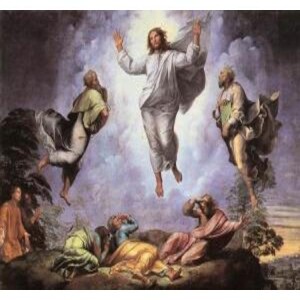
Friday Jun 21, 2024
Friday Jun 21, 2024
Stand In The Gap With Us And Saint Aloysius Gonzaga 6/21/2024. Gonzaga was born the eldest of eight children.
As early as age four, Luigi was given a set of miniature guns and accompanied his father on training expeditions so that the boy might learn "the art of arms".
At age five, Gonzaga was sent to a military camp to get started on his training. His father was pleased to see his son marching around camp at the head of a platoon of soldiers. His mother and his tutor were less pleased with the vocabulary he picked up there.
He grew up amid the violence and brutality of Renaissance Italy and witnessed the murder of two of his brothers.
Aloysius Gonzaga (Luigi Gonzaga, 1568-1591) gave up a privileged life and a princely inheritance to live the vows of religious life even to the point of contacting the plague because of his selfless care for people already sick with it.
The Lord can make saints anywhere, even amid the brutality and license of Renaissance life. Florence was the “mother of piety” for Aloysius Gonzaga despite his exposure to a “society of fraud, dagger, poison, and lust.” As a son of a princely family, he grew up in royal courts and army camps. His father wanted Aloysius to be a military hero.

Friday Jun 21, 2024
Friday Jun 21, 2024
To Understand the War From Within. Battles rage constantly all over the world, proof of this is brought right into our living room each night when we turn on the television.
There is also a private war taking place. Jesus responded to a question posed saying, "Jesus replied, “The first is this: ‘Hear, O Israel! The Lord our God is Lord alone! You shall love the Lord your God with all your heart, with all your soul, with all your mind, and with all your strength."
There is an interesting perspective Jesus presents that few have observed. John the Virginian have taken notice of this recognizing an important connection between your heart, your soul, your mind, and your strength. Every person has four major parts that all need to be healthy for every person.
Jesus first mentions the heart. The heart speaks to the Emotional Wellness. A healthy heart builds awareness of one's feelings concerning acceptance of who they are in Christ. Our Faith experience needs a healthy heart that impels a person to a deeper union with God and the Church.
Jesus next mentions the soul that speaks to Spiritual Wellness. A healthy soul is a part of a person that recognizes the sacrifice required to sacrifice for others. Most of all, the soul drives a person to desire a closer relationship with God. To follow the Commandments builds religious faith inspiring to be role modals.
Jesus next mentions the mind that speaks to Social Wellness. A healthy mind presents a person that recognizes their impact on their communities and society. The healthy mind responds to stimulus build on an informed conscience including thinking and feeling.
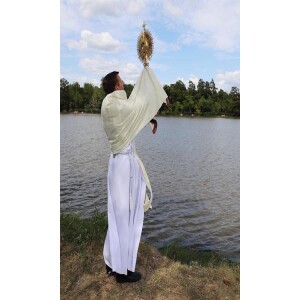
Thursday Jun 20, 2024
Thursday Jun 20, 2024
Stand In The Gap With Us And Saint Paulinus of Nola 6/20.2024. Pontius Meropius Paulinus was born c. 352 at Bordeaux, in southwestern France. He was from a notable senatorial family with estates in the Aquitaine province of France, northern Iberia, and southern Italy. At some time during his boyhood, he made a visit to the shrine of St Felix at Nola near Naples.
Anyone who is praised in the letters of six or seven saints undoubtedly must be of extraordinary character. Such a person was Paulinus of Nola, correspondent and friend of Saints Augustine, Jerome, Melania, Martin, Gregory and Ambrose. Born near Bordeaux, he was the son of the Roman prefect of Gaul, who had extensive property in both Gaul and Italy. Paulinus became a distinguished lawyer, holding several public offices in the Roman Empire. With his Spanish wife, Therasia, he retired at an early age to a life of cultured leisure.
In 393 or 394, after some resistance from Paulinus, he was ordained a presbyter on Christmas Day by Lampius, Bishop of Barcelona. The two were baptized by the saintly bishop of Bordeaux and moved to Therasia’s estate in Spain. After many childless years, they had a son who died a week after birth.

Wednesday Jun 19, 2024
Wednesday Jun 19, 2024
Stand In The Gap With Us And Saint Romuald. 6/19/2024. Romuald was born in Ravenna, in northeastern Italy, to the aristocratic Onesti family.
In the midst of a wasted youth, Romuald watched his father kill a relative in a duel over property. In horror he fled to a monastery near Ravenna. After three years, some of the monks found him to be uncomfortably holy and eased him out.
As a youth, according to early accounts, Romuald indulged in the pleasures and sins of the world common to a tenth-century nobleman. At the age of twenty he served as second to his father, who killed a relative in a duel over property. Romuald was devastated and went to the Basilica of Sant'Apollinare in Classe to do 40 days of penance.
Romuald spent the next 30 years going about Italy, founding monasteries and hermitages. He longed to give his life to Christ in martyrdom, and got the pope’s permission to preach the gospel in Hungary. But he was struck with illness as soon as he arrived, and the illness recurred as often as he tried to proceed.
Romuald (Latin: Romualdus; c. 951 – traditionally 19 June, c. 1025/27 AD) was the founder of the Camaldolese order and a major figure in the eleventh century "Renaissance of eremitical asceticism". Romuald spent about 30 years traversing Italy, founding and reforming monasteries and hermitages.
During another period of his life, Romuald suffered great spiritual dryness. One day as he was praying Psalm 31 (“I will give you understanding and I will instruct you”), he was given an extraordinary light and spirit which never left him.
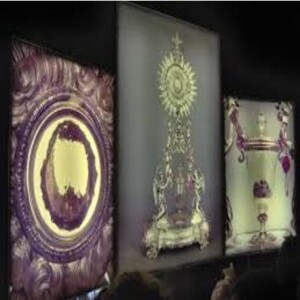
Wednesday Jun 19, 2024
Wednesday Jun 19, 2024
Lanciano Eucharistic Miracle 1270 years old. This one started many scientific discoveries, and needs to be shared far and wide. God bless, GregoryMary
Lanciano, Italy 8th Century A.D.
Pathological Histology and in Chemistry and Clinical Microscopy. He was assisted by Prof. Ruggero Bertelli of the University of Siena.
The analyses were conducted with absolute and unquestionable scientific precision and they were documented with a series of microscopic photographs. These analyses sustained the following conclusions:
The Flesh is real Flesh. The Blood is real Blood.
The Flesh and the Blood belong to the human species.
The Flesh consists of the muscular tissue of the heart.
In the Flesh we see present in section: the myocardium, the endocardium, the vagus nerve and also the left ventricle of the heart for the large thickness of the myocardium.
The Flesh is a "HEART" complete in its essential structure.
The Flesh and the Blood have the same blood-type: AB (Blood-type identical to that which Prof. Baima Bollone uncovered in the Holy Shroud of Turin).
In the Blood there were found proteins in the same normal proportions (percentage-wise) as are found in the sero-proteic make-up of the fresh normal blood.
In the Blood there were also found these minerals: chlorides, phosphorus, magnesium, potassium, sodium and calcium.
The preservation of the Flesh and of the Blood, which were left in their natural state for twelve centuries and exposed to the action of atmospheric and biological agents, remains an extraordinary phenomenon.

Tuesday Jun 18, 2024
Tuesday Jun 18, 2024
Stand In The Gap With Us And Venerable Matt Talbot 6/18/2024. Matt can be considered the patron of men and women struggling with alcoholism. He was born in Dublin, where his father worked on the docks and had a difficult time supporting his family. After a few years of schooling, Matt obtained work as a messenger for some liquor merchants; there he began to drink excessively. For 15 years—until he was almost 30—Matt was an active alcoholic.
One day he decided to take “the pledge” for three months, make a general confession and begin to attend daily Mass. There is evidence that Matt’s first seven years after taking the pledge were especially difficult. Avoiding his former drinking places was hard. He began to pray as intensely as he used to drink. He also tried to pay back people from whom he had borrowed or stolen money while he was drinking.
Most of his life Matt worked as a builder’s laborer. He joined the Secular Franciscan Order and began a life of strict penance; he abstained from meat nine months a year. Matt spent hours every night avidly reading Scripture and the lives of the saints. He prayed the rosary conscientiously. Though his job did not make him rich, Matt contributed generously to the missions.
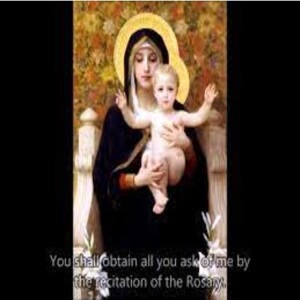
Tuesday Jun 18, 2024
Tuesday Jun 18, 2024
Mary's Fiat and Typologies found in the Old Testament. Before I begin looking at the Virgin Mary's Fiat, I want to take a look at some of the Old Testament typologies regarding Mother Mary.
A "Typology" could be defined as a belief in the continuity of the Old Testament and the New Testament. Biblical Typology is when a person or event in the Old Testament foreshadows a person or event in the New Testament. Just as God, prepared the way for His son in the history of Israel, so, too, He prepared the way for the mother of His son.
These types can be through people, places, or things. We can focus on really just about every Old Testament woman that had a part to play in Salvation history. For the purpose of this writing, I will focus on five of them; Eve, Hannah, Judith, Esther, and Bathsheba.
Eve is the first woman whose name means "The Mother of the Living". Mary from the bible is the Mother of the Church. Mary is the Mother of all who obey the Commandments and bear testimony to God. Revelation 12:17
Genesis 3:15 and Revelation 12 are uniquely tied as we see the woman, her offspring, and the serpent also known as the Devil. Mary is the "New Eve" being obedient to the Lord where the original Eve was not causing Original Sin and death.
Hannah was a woman who was barren, she was without child and she would approach the Temple pleading to the Lord a child promising she would offer her child for His service. She miraculously conceived giving birth to Samuel, a great prophet of God. Hannah prefigures Mary who held to a vow of virginity, probably associated with the Essence that reinforced that dedication. Hannah received a supernatural conception bringing forth a prophet, Mary also received the incarnation through the power of the Holy Spirit.
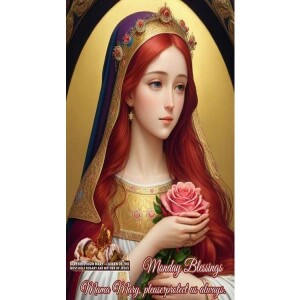
Monday Jun 17, 2024
Monday Jun 17, 2024
Stand In The Gap With Us And Saint Joseph Cafasso 6/17/2024. Even as a young man, Joseph loved to attend Mass and was known for his humility and fervor in prayer. After his ordination, he was assigned to a seminary in Turin.
It was often said that no one who knew Cafasso as a child ever could recall him having sinned, seeing him as a model individual.
He is known as the "Priest of the Gallows" due to his extensive work with those prisoners who were condemned to death.
There he worked especially against the spirit of Jansenism—an excessive preoccupation with sin and damnation. He used the works of Saint Francis de Sales and Saint Alphonsus Liguori to moderate the rigorism popular at the seminary.
In his childhood Cafasso felt called to become a priest and so commenced his ecclesial studies in Turin and Chieri in order to achieve his dream.
Joseph recommended membership in the Secular Franciscan Order to priests. He urged devotion to the Blessed Sacrament and encouraged daily Communion. In addition to his teaching duties, Joseph was an excellent preacher, confessor, and retreat master. Noted for his work with condemned prisoners, he helped many of them die at peace with God.
In addition to his teaching duties, Joseph was an excellent preacher, confessor, and retreat master. Noted for his work with condemned prisoners, he helped many of them die at peace with God.
He was a sought after confessor and spiritual adviser, and ministered to prisoners – working to improve their terrible conditions. He met Don Bosco in 1827 and the two of them became great friends.
